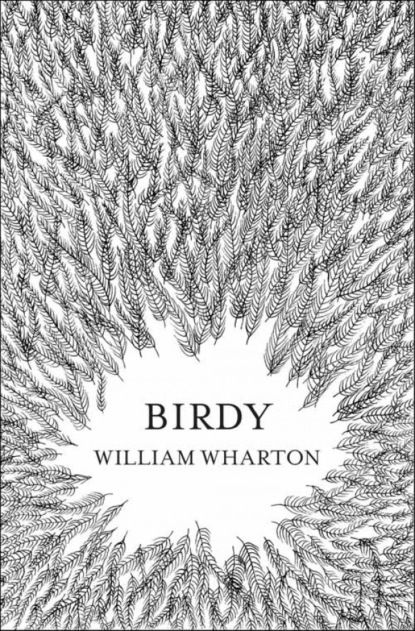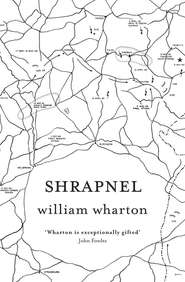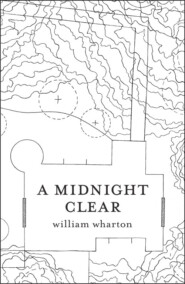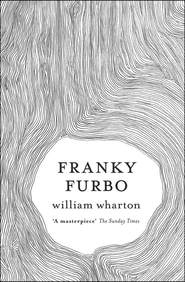По всем вопросам обращайтесь на: info@litportal.ru
(©) 2003-2024.
✖
Birdy
Настройки чтения
Размер шрифта
Высота строк
Поля
There are many types of canaries. Some are called choppers and sing a loud song; their beaks open, ending each note by closing the beak. Others are called rollers. They sing with beaks closed and deep in the throat. There are different kinds of rollers and choppers and there are contests for singing. There are also various shapes and sizes of canaries; some are so peculiarly shaped they can scarcely fly.
I decide to buy a young female because they’re less expensive. I’m interested in flying, not singing. I buy a bird magazine that comes out every month; it gives addresses of people who sell birds. I start looking at all the canary aviaries I can find, and get to, on my bicycle. It’s two months before I find her.
She’s in a large aviary in the back yard of a lady called Mrs Prevost. Mrs Prevost is fat and has little feet. She has aviaries in her back yard and breeding cages on the sun porch. She doesn’t care much about song or color or how her birds fly. I don’t think she particularly raises them for money either. She just likes canaries.
She goes into the aviary and all the birds come flying down to her and land on her arms or on her head. She’s trained the birds and has some who’ll hop up and down little ladders or ring bells to get food. She has some she can take out of the cage on a perch. They won’t fly off the perch even when she waves it around.
Mrs Prevost looks carefully for cats and hawks before she takes out a bird. She’s terrific; she should be in a circus.
Mrs Prevost lets me sit in the aviary and watch her birds as much as I want. It’s in her aviary I decide I like canaries more than pigeons. It’s mostly in the sound of wings. Pigeon wings whistle and have a crackly stiff feather sound. Canary wings make practically no sound at all, only the kind of sound you make with a fan if you flip it quickly, a pressure against the air.
I sit out there in the aviary with the females every Saturday for over a month. I never see Mr Prevost. Mrs Prevost brings me cups of tea in a thermos when it’s cold. Sometimes she puts on a coat and sits there with me. She points out different birds and tells me who the parents are and how many were in the nest and which ones got caught in the wire or were sick so she had to save them. She tells me which ones she’s thinking of breeding and why she’s choosing them. She’s going to breed thirty females that next year. She chooses them to breed just because these females are good mothers or come from good mothers. She isn’t trying to breed for anything special except more canaries. Mrs Prevost would sure make a good mother but she doesn’t have any children. I didn’t ask her; she told me.
She shows me one of her females who’s six years old and has given over sixty birds. This female comes and sits on Mrs Prevost’s finger. Mrs Prevost transfers her to my finger one afternoon. She perches there a few minutes while Mrs Prevost leans down and talks to her. Mrs Prevost talks to her birds. She doesn’t peep or whistle; she just talks in a low voice the way you’d talk to a baby.
Mrs Prevost hates cats and hawks. She has a continual war with them. There’re always stray cats coming in hoping for an easy meal. She’s tried fencing, but you can’t fence out a cat. She says she can’t get herself to poison them. A couple times there’re cats sitting outside the aviary, turning their heads back and forth watching the birds fly. Mrs Prevost’d dash out on her tiny feet and chase them. I tell her she ought to get a dog.
Once, when I’m sitting in the aviary, one of the cats comes and doesn’t see me. It must scare hell out of a bird having a cat with those little slit green eyes watching – twisting its tail back and forth. After a while, this one can’t wait and throws itself against the wire. It hangs there with its mouth open, pointed teeth against a thin ridged pink top of mouth. The sharp claws are wrapped into the wire. It almost makes me glad I’m not a bird.
I saw Birdie the first day I sat in the aviary. I actually keep going back just to watch her but I don’t tell Mrs Prevost this. The aviary is taller than it is wide either way. Birdie is the only bird who flies around the inside of the upper part of the aviary. The others fly from perch to perch or down to the floor to eat but Birdie flies around and around in banked circles. It’s the kind of thing I’d do myself if I were a bird and lived in that aviary.
Birdie is very curious. There’s a piece of string hanging from the top of the aviary. It’s not more than two inches long. Birdie has to turn herself upside down to pull it and she hangs there minutes at a time, pulling and tugging, doing her best to hang on and backing off with her wings, trying to pull it loose.
There’s another thing I like better about canaries than pigeons. Pigeons do a lot of walking. They swing their short bodies back and forth like a duck and walk around on short legs, or sometimes when they’re courting, they pull themselves up and take short soldier-like marching steps. Canaries never walk. If they move on the ground, they hop. Most times a hop means a little flit with the wings. It makes them look so independent. They hop in place, then hop to another place. I’ve noticed robins both running and hopping but canaries never walk.
Sometimes, Birdie’d just hop all over the cage. She’d pick up a tiny stone here and move it over there. She’d dig in the sand with her beak. She won’t bring anything out, just digging. It’s like she’s doing some kind of bird housekeeping.
Then, sometimes, she’ll hunch back and take a flying leap for the highest perch. This takes a careful aim because perches are spread all over the place. Mrs Prevost puts in lots of perches; she doesn’t think much about birds having long free places to fly. Birdie flies between the perches as if they aren’t there. She’s beautiful.
I go downtown and hunt around junk shops till I find a cage. It costs twenty-five cents. I take it home to fix up. First, I scrape all the paint and rust from the bars. There are two broken places; I repair them. I straighten and clean the tray in the bottom. I boil and wash out the food and water dishes. It isn’t a big cage, fifteen inches deep, thirty long and twenty high. I hate to think of taking poor Birdie away from the big cage and her friends to put her into this small cage, alone. I know I’ll make it up somehow.
After it’s all clean, I paint the cage white. I give it two coats till it looks practically new. I put some newspaper in the bottom, and bird gravel. I buy roller mix seed and put it in one cup and fresh water in the other. I’m ready to bring Birdie home.
I carry her on my bike in a shoe box with holes punched in the sides. I can hear her scrambling around inside, sliding on the slippery bottom of the box. I wonder what a bird thinks when her whole life is suddenly changed like this. She isn’t one year old and she’s lived her whole life either in the nest or the breeding cage, or in the aviary with other birds. Now she’s in a dark box with no perches, she can’t see and can’t fly. I speed home as fast as I can.
I go in the back door and up the back stairs to my room. I don’t want to show her to anyone.
I cut a hole carefully in the end of the box and put the hole next to the cage door. In only a few seconds she hops into the cage. She lands on the floor and stands straddle-legged. She looks around. She seems even more beautiful than she did in the aviary. I don’t want to scare her, so I back up to the other side of the room where I have my binoculars. I turn the chair around and rest the binoculars on the back of the chair so I can watch her without my arms getting tired.
After a few little hops, rattling sand on the paper, she hops up onto the middle perch and peeps. It’s a single note going from low to high and watery. It’s the first time I hear her voice. In the aviary, there’s so much sound you can’t hear any particular bird.
She cocks her head and looks from side to side. She knows I’m there across the room and she looks at me first with one eye, then the other. Canaries don’t look at any particular thing with both eyes at once. Most birds don’t. They only see with both eyes when they’re not really looking at anything. When they want to see something particular, they look with one eye and blind out the other. They don’t close it, just blind it.
Birdie moves lightly and quickly, heavy air means nothing. She hops up to the top perch and wipes her beak, sharpening it, checking, the way dogs sniff trees.
She’s yellow, the yellow of a lemon. Her tail feathers and wing tips are lighter, almost white. The feathers on her upper legs are lighter too. Her legs are orange-pink, lighter than pigeon legs, delicately thin. She has three toes forward and one back like all tree birds, and her nails are long and thin, translucent, with a fine vein down the center. She’s medium-sized for a canary and has a rounded, very feminine head; her eyes are bright black, her beak exactly the color of her legs. Small pink nostril holes are tucked under the feathers of her head at the top of her beak.
She peeps again and turns around on the perch to face the other way. She does this without seeming to use her wings. She springs lightly up, twists her body, and is facing the other way. It’s the same move an ice skater makes when she jump turns, only with much less effort. Birdie does this while still eyeing me left and right, shaking her head back and forth, a bird ‘no’.
Her eyes lose focus and she goes into total vision. She isn’t looking at me anymore. She jumps down to the bottom perch and sees the water cup. She tips her head in, dips her beak into the water, and tilts her head back. She does this three times. Like pigeons, she can’t swallow up. She lets the water flow down into her throat. It looks as if she closes her beak over a certain small quantity of water, not more than a drop, then holds it till she tilts up so it rolls down her throat.
After drinking, she hops to the floor of the cage. A bird needs sharp gravel to grind food in its crop. She hops around, making sand rattle on the paper again, takes a few grains, then jumps up on the bottom perch again for some birdseed.
The seed I’ve bought contains rape, a tiny black round seed; canary seed, a thin tan-colored shiny seed with a white fruit; rolled oats; and linseed. She dips into the food dish and spreads seeds around till she finds one of the rolled oats. She picks it up, peels off the shell and eats the fruit. It’s done quickly. While she’s eating, she looks over at me twice. Birds are very suspicious while they’re eating. She eats about five seeds; the rolled oat, two rape seeds and at least one canary seed. She uses a different technique to peel each type. She doesn’t eat any linseeds. Linseeds are to keep the feathers in condition.
It’s amazing how well birds can work seeds out of the shell using only their beaks; no arms, no hands.
Later, I try eating birdseed to see what it’s like. I spend hours cracking seed with my teeth. One mouthful takes a full hour. You can’t eat the shells because they’re bitter.
After Birdie’s eaten, she leaps with one slight flick of her wings, a hardly noticeable flick, from the bottom perch, turns around in midair and lands on the top perch, at least four times her height. It’s as if I jumped off the porch right up onto the roof. She peeps at me from there. I try to peep back.
She checks the bars of the cage with her beak and nibbles some cuttlebone. Cuttlebone is from a fish; it has calcium and other minerals for birds. She constantly tries to talk to me, or maybe she’s trying to discover any other birds around. There’s a sad sound in the peep, interrogative, going up at the end, peeEEP? She opens her beak half way when she says it and of ten says it just as she leaves one perch for another. Perhaps it’s a signal to let other birds know she’s changing position. I don’t really know enough about canaries.
When it gets dark, I cover her cage with a cloth to protect her from drafts.
The next day is Sunday. I see her trying to bathe in the water cup so I put a saucer of water in the cage. She goes down immediately with a peep that’s different from the others, shorter, more like PEep? She stands on the edge of the dish, shakes her feathers impossibly fast, stretches out her wings to show feathers individually, then throws herself into the water with another short PEep? She goes in and out, splashing, wiggling. There’s a concentration, a total involvement; nothing passive. I’ve watched hundreds of pigeons take baths in water or in dust but it was slow motion compared to Birdie.
After she’s splashed all the water from the saucer and made a soggy mess out of the newspapers on the floor of the cage, she flies wildly around, almost crashing into the bars. Her flight feathers are so wet, they hang bedraggled, resting on the perch. The feathers around her face clump in little bunches. She dashes back and forth, from perch to perch, shaking, vibrating her whole body. Drops of water fly across the room even onto the lenses of the binoculars. They’re like comets charging into my miniature world.
Finally, most of the water shaken off, Birdie begins to preen herself. She takes each feather in her beak and combs it out to the tip. She leans back frequently to the oil sack at the tip of her tail and spreads a thin film of oil over the newly washed feathers, one at a time. The bath, from beginning till end, finishing with a satisfied flurry of fluffiness, takes almost two hours.
I’m really in love with Birdie now. She’s so dainty, so quick, so skilled, and she flies so gracefully. I want to have her fly in my room free but I’m afraid I’ll hurt or frighten her putting her back into the cage. It’s very hard to wait.
That afternoon, I give Birdie a first taste of treat food. I try peeping when I give it to her, the question peeps, peeEEP? I give treat food in a special cup shaped to fit between the bars of the cage and rest on the edge of the middle perch. I keep my hand as near to it as I can when she comes to eat.
The feed has a smell of anise and is sweet. I only put a few grains of seed in the dish. Birdie looks at me where I am with my hand near the food. She cocks her head and tries to see me from different angles. She comes close, then flies away. She pretends she isn’t interested at all and goes down to eat the regular seed. I know she’s curious. At last she comes up and quickly steals one seed out of the dish. She goes to the other end of the perch to eat it. She queeEEP?s at me and I try to queeEEP? back. She comes again and takes another seed. She eats it looking me in the eyes. I don’t move.
She puts one foot onto the little dish to hold it and eats the rest of the seeds. Her foot’s within an inch of my fingers. I can see the tiny pink scales and light veins running down her legs next to my own massive whorled fingerprints. I can smell her, the smell of eggs when they’re still in the shell, probably the smell of feathers. I don’t remember just that smell from pigeons. Pigeon smell is musky with something of old dust; this is a thin perfume.
When she’s finished, she lets go of the dish and wipes her bill on the perch but doesn’t go away.
I queeEEP? at her but she only looks at me. I queeEEP? again. She sees me; she’s questioning what I really am. It lasts maybe ten seconds, a long time for a bird. Then she goes down to the floor of the cage and eats a few grains of sand. I’m very happy.
Next day, I think about Birdie all day at school. I don’t even want to look at people. People can be so gross, especially grown-ups. They grunt and groan, make swallowing and breathing noises all the time. They smell like putrid meat. They crawl around with heavy movements and stand as if they’re nailed to the ground.
At lunch, walking around the track, I practice jumping and turning around. It’s hard to do. It’s much easier if you do it when you’re running. Standing still and jumping up is almost impossible. You’ve got to twist hard enough to get around in the little time you have from the jump and yet not so fast you’re still twisting when you hit the ground. You have to twist back against yourself with your shoulders in the air. I almost do it once by getting down in a crouch and taking an easy jump up and a slow twist. For a second, it feels right, a little bit free, but then I hit the ground wrong and fall. I get too loose up there. I have to speed up my body thinking somehow.
When I come into my room after school, Birdie queeps at me. We keep queeping back and forth while I change from school clothes. I have to go down again and sweep off the back porch. If my mother ever gets an idea I’m spending too much time with a bird, it’ll be like the pigeons all over again.
After the gas tank, I hid my pigeon suit up in the rafters of the garage. I know she’s still looking for it, says she’s going to burn it – going to burn it for my own good, she says.
I can’t figure what she thinks is unhealthy about birds. Does she want me to spend all my time chasing after girls at school or making myself the strongest man in the world, like Al; or maybe hopping up cars and tearing them apart. What’s so healthy about that?
I don’t want any trouble, that’s all. I do a good job on the porch and water the flowers on the window sill. I pick up some papers and a couple of old rusty cans from the back yard. Kids are always throwing tin cans over the fence. If my mother’d stop running out and shaking her mop or broom at them, they’d quit. I still haven’t figured out where she keeps those baseballs. They must be worth a fortune.
Back in my room, I get out some treat food and walk quietly over to the cage. Birdie’s queeping with me. I’m listening to hear if she has anything else to say; I can’t hear anything different. Canary is still a foreign language to me. I got so I could understand most of the things pigeons have to say. They don’t really talk, they only signal each other.
I slide the dish between the wires of the cage onto the perch. She comes up to the perch and stands on the other end. Now, there’s definitely a change in her voice. It’s still queep but much louder, like somebody saying, ‘really?’ It’s qurEEPP?, from deeper in her throat. I can hear it but I can’t do it; I give her a regular queeEEp? back. After a half dozen of these loud qurEEPP?s, she hops left and right along the perch over to me. With each hop she completely turns her body direction to the perch, at the same time keeping her head toward me. Each hop lines the other eye up with mine. She’s shifting her vision from eye to eye as she advances. Incredible, almost impossible to describe, but she does it without seeming to notice.











